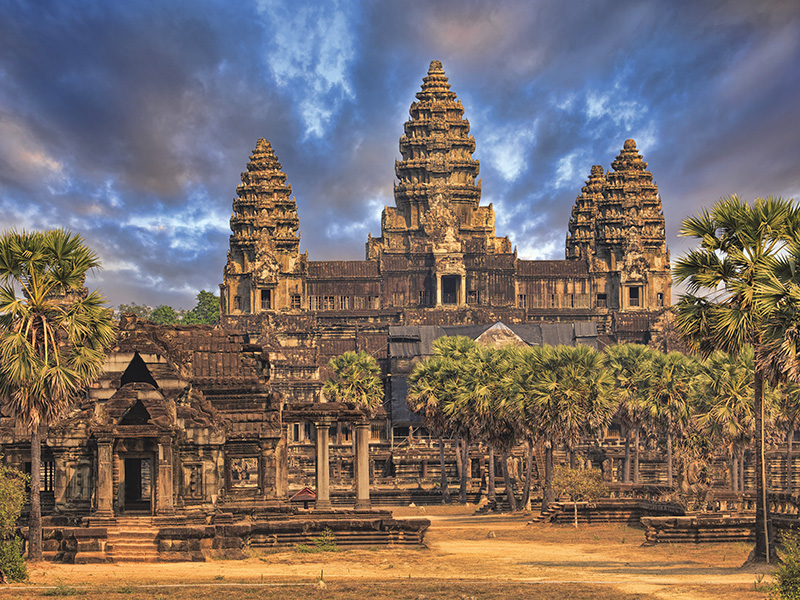Set within the Angkor Archaeological Park that covers several thousand acres of flat plain in Cambodia is the temple complex of Angkor Wat — the world’s largest religious shrine. A solo traveller describes a memorable excursion My bus trundled down a highway leading out of Bangkok, already clogged with traffic at an early hour. Four hours later, we arrived at the frontier town of Aranya Prathet and joined a serpentine queue before an immigration booth. Passing under a huge arched gateway guarded by snarling lions and threatening dragons, we crossed into Cambodia. A dry bed of a stream, choked with rubbish, marked the border between these two high-contrast kingdoms of South-east Asia. Once inside Cambodia looking back across the border to the Thai side, I could see brightly-painted shops bursting with consumer goods, chic cafes, high fashion boutiques, and Chinese-run money-changing booths, doing brisk business. On the Cambodian side, limbless beggars importuned for alms, wrinkled men pushed wooden carts laden with cardboard boxes and rusted pipes, skinny women with taut skins dressed daintily in batik sarongs and turbans, squatted on their haunches vending boiled beans, prickly fruit in bamboo baskets and bits of dried meat and fish pinned to cardboards with clothes clips. Feverish construction activity choked the air with fumes and dust — a dozen casinos, owned by Thai-based Chinese tycoons, were coming up. The kingdom of Cambodia (pop.16 million) is still struggling to emerge from decades of bloody conflict and civil war — the American invasion of the 1970s and the Indo-China war followed by years of brutal rule under the communist Khmer Rouge led by the megalomaniacal Pol Pot and his clique until the early 1980s. The rickety bus we were herded into after immigration formalities chugged down a rutted road, past tell-tale signs of decades of war that laid waste this tiny country sandwiched between Thailand to the west and Vietnam to the east and north. Ravaged fields stretched into tree-lined horizons, while the eerie blankness was occasionally interrupted by thatch-roofed shacks built of tin and wooden planks, standing on cement stilts. Chickens, cattle and dogs pottered about in the space between the stilts, where old men snoozed in hammocks, while women tended to vats puffing away on log fires. As night fell, we drove into Cambodia’s second largest city, and a gateway for tourists who still come in massive droves to explore its ancient glories and behold the world’s largest religious structure — the temple complex at Angkor Wat, 12 km to the north. The contrast with the surrounding countryside is stark, surprising and welcome — broad, smooth roads, wide walkways, neatly-pruned flowering trees trailing into crystal clear canals, cheerful parks where lovers canoodle, and row upon row of brightly-lit hotels to suit every budget. “There are more hotels now in Siem Reap than temples in Angkor,” joked our amiable bus conductor. The area of Siem Reap favoured by budget travelers lies beyond a network of canals, behind a dense mango grove, close to the…
The Wonders of Angkor Wat
